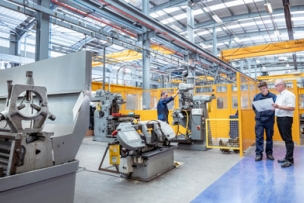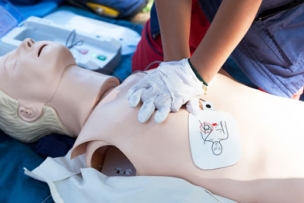With natural disasters being so commonplace these days, preparedness is not an option or a luxury; it is a necessity. Many such disasters occur with little to no warning, while in other instances—such as hurricanes—there can be a few days to a week’s warning. In either case, the time to prepare is now.
Often the emphasis on disaster preparedness is focused on homeowners and families. But businesses, particularly small businesses, are highly susceptible to the devastating impacts of natural disasters as well. Nevertheless, the Federal Emergency Management Agency (FEMA) reports that most are unprepared. And what’s more, the aftermath can be a situation worse than the event itself. Below are statistics from the U.S. Chamber of Commerce Foundation:
- For small businesses, over 40 percent never reopen after a major disaster such as a hurricane, flood, or earthquake.
- Of those businesses that manage to reopen, approximately 25 percent of them will fail within two years because of issues related to the disaster.
- Only about 20 percent of businesses have a disaster recovery plan.
It clearly makes good business sense to have an emergency preparedness plan for your workplace. If your business has not begun this process, it’s time to get busy. If your company already has a plan in place, you should review it regularly to ensure it applies to your current business environment.
Justrite is here to help. While their line of safety equipment is primarily aimed to meet your day-to-day safety needs, it can also be highly beneficial in times of emergency. Putting safety precautions in place—including being prepared with the right equipment—can save lives, minimize property damage, and protect your business when disaster strikes.
Restaurant Safety Regulations
According to the Occupational Health and Safety Administration (OSHA) 29 CFR 1910.151(c), facilities are required to have an emergency eyewash station or emergency shower station if personnel are working with corrosive materials that could cause bodily harm. These eyewash stations are required to be in the “immediate” vicinity in case of an accident.
Corrosive or caustic materials are often found in cleaning agents used by restaurant staff to clean equipment, floors, or other areas of the establishment. If employees are handling caustic or corrosive materials in your restaurant, the OSHA regulations concerning these chemicals may apply to your business, and you may be required to install an eyewash or shower station.
To find an eyewash station or emergency shower station that fulfills the OSHA requirements, businesses turn to the American National Standards Institute (ANSI) for guidance. According to ANSI Z358.1-2014, eyewash and shower stations need to be visible, accessible, and reliable.
“Reliable” in this context refers to the water source used for the eyewash and shower stations. Water sources should provide “tepid” (60-100 degrees Fahrenheit) water at an appropriate flow rate. ANSI Z358.1-2014 also stipulates that the station should take no more than 10 seconds for the employee to reach in case of emergency.
What Kind of Equipment Do I Need in Order to Prepare for Natural Disasters?
Emergency preparedness looks different for different companies. It also depends on what part of the world you are in and what types of natural disasters are most prevalent. Depending on your business’ scope of work, the materials you work with, and your exposure to natural events, you could need any number of different pieces of equipment.
You need to consider how you will:
- Safeguard flammable liquids and hazardous materials that are on site
- Ensure that you have adequate fuel for your generators and other equipment
- Store your emergency preparedness equipment
- Contain spills
- Provide basic hygiene for your workers
Justrite has the equipment to help you prepare for unexpected emergencies. In addition to emergency prep, their equipment is useful in making your day-to-day operations safer.
Safety Cans and Other Secure Containers
Following a natural disaster, power outages are common. It is critical for businesses to maintain operations if at all possible, most often requiring the use of portable generators. In cold climates, your company may also need kerosene heaters to keep workers warm. Generators and portable heaters require fuel and a safe means for refueling. Safety cans are the best safety choice for containing the fuel for this equipment.
Justrite safety cans are available in 1- to 5-gallon sizes and comply with Occupational Safety and Health Administration (OSHA) standards. Their heavy-duty design is coupled with ease of operation; they are available color-coded to minimize refueling mix-ups which are especially possible in the confusion that surrounds an emergency.
If your facility works with solvents, corrosives, or other dangerous liquids, particularly in the lab environment, it is incredibly important that these be stored in secure containers that can provide a positive seal if they are disturbed during a natural event. Again, Justrite has you covered with steel and polyethylene safety cans for flammable liquids, acids, and other hazardous materials.
Safety Cabinets and Lockers
Once you have secured your fuel and other flammable and dangerous liquids in safety cans or other secure containers, the next step is to then secure them in a suitable enclosure. The best safety choice is to store them inside of an OSHA-compliant safety cabinet.
Safety cabinets provide the highest degree of protection for flammable and hazardous liquids. While OSHA requires safety cabinets when storing over 25 gallons of a flammable liquid inside of a building, safety cabinets are your safest option even when lesser amounts are stored.
If you have outdoor drum storage of hazardous liquids, particularly those which are flammable, it is important to contain and control them. High winds, floods, earthquakes, and wildfires all present a clear hazard to drums stored outside. Fortunately, there is a solution for their protection. Justrite provides drum lockers that are 2- and 4-hour fire-rated and can safely store 6, 9, 12, or 16 drums. Among the many built-in safety features are anchoring plates that help keep it secured in place should it or its surroundings become disrupted.
Emergency Preparedness Cabinets
When you have done your homework and disaster preparedness planning and are assembling a cache of disaster preparedness supplies, it is important to stage them in a central location that is both safeguarded as well as easily accessible. Justrite’s emergency preparedness cabinet is the solution and provides storage for your emergency items.
This high-performance cabinet features a fire-resistant design with durable powder paint “emergency orange” finish for high visibility. It can be located quickly during power outages with its GloAlert™ glow-in-the-dark labels. Featuring four adjustable shelves and an available PowerPort Pass-Thru for charging equipment, it is ideal for storing flashlights, radios, respirators, first-aid items, and just about anything else you might need in an emergency.
Spill Protection
During any flooding event, there is always the possibility that flammable or other hazardous liquids can enter the floodwaters. This could make natural disaster problems far worse by inserting safety and environmental issues into the mix. When using generators or hydraulic equipment, the safest practice is to confine them in a Justrite spill containment berm. In addition to containing any spills, they also provide a degree of protection to your equipment from groundwater.
The Rigid-Lock QuickBerm® provides immediate, secure deployment and no-worry spill-readiness. Justrite flexible containment berms are available in a wide variety of sizes and capacities to meet every containment need.
Noise Reduction Barriers
Much of the equipment used in post-emergency operations is noisy. Generators, pumps, jackhammers, and saws all produce significant noise. While noise reduction is always a good and safe practice, during prolonged operations following a disaster, it is a must. Not only is it a safety measure to protect workers’ hearing, but it is also a wise public relations move to avoid disturbing neighbors, particularly at night.
Justrite QuietSite™ Noise Barriers combat noise pollution by absorbing and reflecting sounds. These sound barriers can reduce the perceived noise level (dBA) by up to half. This will make a huge difference when your generator is running around the clock for days on end.
Mobile Emergency Shower Stations
Your personnel can become muddy, dirty, or worse—contaminated—while working in post-emergency cleanup. In addition to affecting their health and safety, it can also have an adverse effect on their overall sense of well-being. The Hughes Mobile Self Contained Emergency Safety Shower is a solution that is easily movable by one person and can also be towed by a small vehicle. Its dimensions allow it to fit through standard door openings so that it can be used inside. A heated version with a 528-gallon tank is available to provide tepid water temperatures of 60° to 100°F (16° to 38°C); this prevents personnel from experiencing freezing showers in colder climates.
Another shower option is the Hughes Portable Decontamination Shower. If an external water supply is available, this device, featuring 16 nozzles, can be set up quickly to decontaminate or rinse off personnel. The compact unit comes in a handy carrying case that doubles as the base for the shower.
When using a shower for decon, it is necessary to contain the water to prevent additional environmental contamination. The Justrite Decon Berm provides this and offers a quick setup coupled with rigid construction. Or, if you simply need a dry, contained area for personnel to step into once they have washed the mud off, it works great for that too. The decon berm is available in 2-, 3-, and 4-zone models.
Hand-Washing Stations
Being able to wash your hands is an incredibly important aspect to maintain good hygiene, remove contaminants, and prevent the spread of disease. But during times of a natural disaster, this simple task may be difficult or impossible to accomplish. The Hughes Portable Hand Washing Station makes hand washing possible with its 30-gallon tank, hands-free foot-activation, and paper towel/soap dispenser. With a full tank of water, this handy unit can provide up to 150 washes for personnel.
Plan Ahead for Natural Disasters
Natural disasters are disruptive even to forewarned and prepared organizations. For those that are unprepared, the disasters are just that—a disaster. For the health and safety of your workers and the continuity of your business, it is imperative to be as prepared as possible for natural disasters. Justrite helps you be ready when the unexpected strikes.
Make a Plan: General Information for Disasters
This emergency preparedness guide is intended to serve only as a reference to the reader. It is not a substitute for comprehensive knowledge of the safety procedures and regulations surrounding your specific materials, safety cabinet, industry, and location. Justrite assumes no liability for the use or misuse of this information. For comprehensive and location-specific information, Justrite strongly recommends that you contact your local fire marshal or authorities having jurisdiction.
Previously Featured on Justrite's blog.




Talk to Us!
Leave a reply
Your email address will not be published. Required fields are marked *